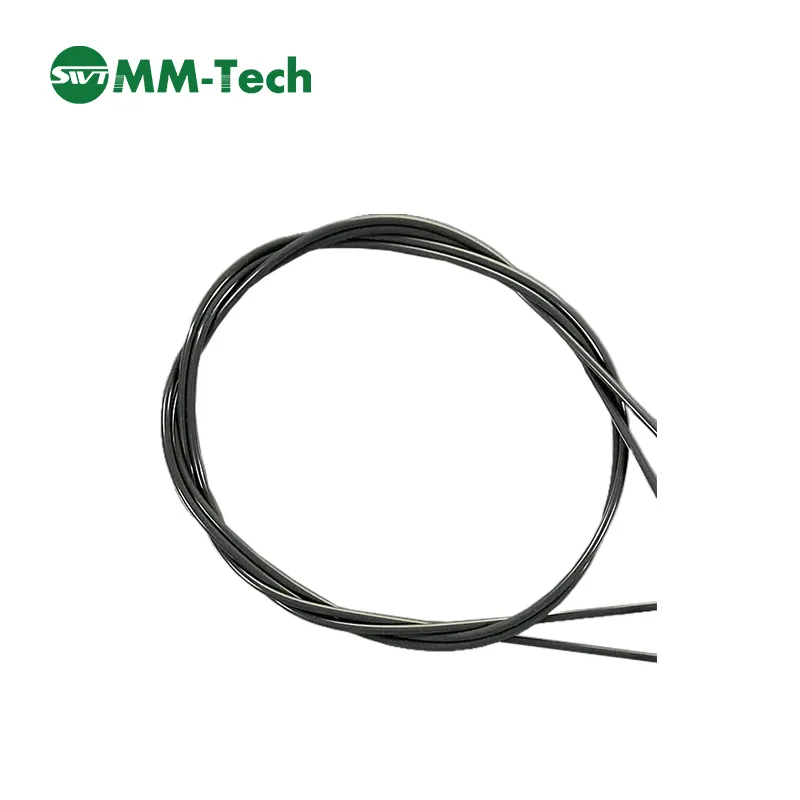
Introduction
The PVC Welding Rod is a critical component in modern industrial manufacturing, offering a reliable solution for joining polyvinyl chloride (PVC) materials. Developed by HEBEI MINGMAI TECHNOLOGY CO., LTD., this product has become a cornerstone in various sectors, from construction to automotive, due to its versatility, durability, and cost-effectiveness. This article delves into the technical specifications, advantages, and real-world applications of the PVC Welding Rod, while also exploring the company’s role in advancing materials science.
Product Overview
Polyvinyl chloride (PVC) is one of the most widely used plastics globally, known for its inert chemical properties and adaptability. First synthesized in 1872, PVC entered commercial use in the 1920s and has since evolved into two primary forms: rigid/unplasticized uPVC and flexible ordinary PVC. The PVC Welding Rod is designed to facilitate the thermoforming, solvent-bonding, and welding of PVC materials, ensuring strong and durable joints. This product is particularly valuable in industries where precision and material integrity are paramount.
Key Features and Advantages
The PVC Welding Rod offers a range of features that make it a preferred choice for manufacturers:
- Chemical Resistance: PVC’s inherent inertness ensures the rod withstands exposure to various chemicals, making it suitable for harsh environments.
- Thermal Stability: The rod maintains structural integrity under high temperatures, crucial for thermoforming processes.
- Cost-Effectiveness: Compared to alternative materials, PVC welding rods provide a budget-friendly solution without compromising quality.
- Easy to Use: The rod can be seamlessly integrated into existing manufacturing workflows, reducing labor and time costs.
- Environmental Sustainability: PVC is recyclable, aligning with global efforts to reduce plastic waste and promote eco-friendly practices.
Technical Specifications
| Specification | Details |
|---|---|
| Material | Polyvinyl Chloride (PVC) |
| Form | Rigid/Unplasticized (uPVC) or Flexible PVC |
| Dimensions | Varies by application; standard diameters include 3mm, 4mm, and 6mm |
| Temperature Resistance | Up to 120°C (248°F) |
| Chemical Resistance | Resists acids, bases, and most solvents |
| Welding Method | Thermoforming, solvent-bonding, or direct welding |
| Standard Compliance | ISO 9001, ASTM D1784 |
Applications in Industry
The versatility of the PVC Welding Rod makes it indispensable across multiple industries:
Construction and Architecture
In construction, PVC welding rods are used to create seamless joints in pipes, windows, and doors. Their resistance to corrosion and weathering ensures long-term durability, even in extreme climates.
Automotive Manufacturing
The automotive sector employs these rods for assembling interior components, such as dashboards and panels, where lightweight and durable materials are essential.
Electronics and Electrical Systems
PVC’s insulating properties make it ideal for electrical conduits and wiring systems. The welding rod ensures secure connections, minimizing the risk of electrical failures.
Water and Wastewater Management
Due to its chemical resistance, PVC welding rods are widely used in the fabrication of pipes and storage tanks for water treatment facilities, ensuring leak-proof and safe operations.
Consumer Goods
From furniture to packaging materials, PVC welding rods enable the production of high-quality, durable consumer products that meet rigorous safety standards.
Company Background: HEBEI MINGMAI TECHNOLOGY CO., LTD.
HEBEI MINGMAI TECHNOLOGY CO., LTD. is a leading manufacturer of industrial materials, specializing in PVC products and welding solutions. With a commitment to innovation and quality, the company has established itself as a trusted partner for businesses worldwide. Their expertise in polymer science and advanced manufacturing techniques ensures that their products meet the highest industry standards.
As highlighted by the National Institute of Standards and Technology (NIST), materials like PVC are critical to modern industrial processes. NIST’s research on polymer properties and welding techniques underscores the importance of precise manufacturing standards, which HEBEI MINGMAI TECHNOLOGY CO., LTD. adheres to in its operations. According to NIST, “The development of high-performance polymers and their welding technologies is essential for advancing sustainable manufacturing practices” (NIST, 2023).
Conclusion
The PVC Welding Rod exemplifies the intersection of material science and industrial innovation. Its robust technical specifications, broad applications, and the expertise of HEBEI MINGMAI TECHNOLOGY CO., LTD. position it as a vital component in modern manufacturing. As industries continue to prioritize efficiency and sustainability, the demand for high-quality welding solutions like the PVC rod will only grow. With ongoing research and adherence to global standards, HEBEI MINGMAI TECHNOLOGY CO., LTD. is well-equipped to meet the evolving needs of the market.
References
National Institute of Standards and Technology (NIST). (2023). Advancing Polymer Science for Sustainable Manufacturing. Retrieved from https://www.nist.gov
HEBEI MINGMAI TECHNOLOGY CO., LTD. – PVC Welding Rod. (n.d.). Retrieved from https://www.mmtechweld.com/pvc-welding-rod.html
MM-Tech, established in 2011, is a leading manufacturer of thermoplastic welding equipment in China.hot air plastic welder We specialize in the research, development, production, and sales of thermoplastic welding equipment.hot air welding gun Our product line is extremely rich, covering geomembrane welders, polymer hot air welders, tarpaulin hot air welders, hot air welders, hand extrusion welders, and various welding tools, comprehensively meeting the diverse needs of both on-site construction and workshop operations.hot air welder roofing Our products have been exported to over 100 countries and have won the trust of more than 3,000 customers.plastic welding heat gun|super blog